|
Vintage computers from the 1970's didn't use memory "chips" like computers do today. There simply weren't any memory chips - they did not yet exist. Instead, they relied upon "core" memory. It was the best they had at the time. Here's how it works - Tiny ferrite toroids, or cores (like that of a transformer) receive a tiny magnetic charge from the current induced in the wires, and become magnetized. They are non-volatile, and will retain the charge until changed. Using this technique, 1's and 0's can be stored and read by the computer program. Sounds simple, but like most things it is actually much more complicated than it sounds. The earliest core's were rather large, easily visible with the human eye, and the core's and wires were actually strung together "by girls stringing wires with long needles...". The core memory seen below is a much later version assembled by machine - the core's are so tiny that I cannot even differentiate them without magnification. |
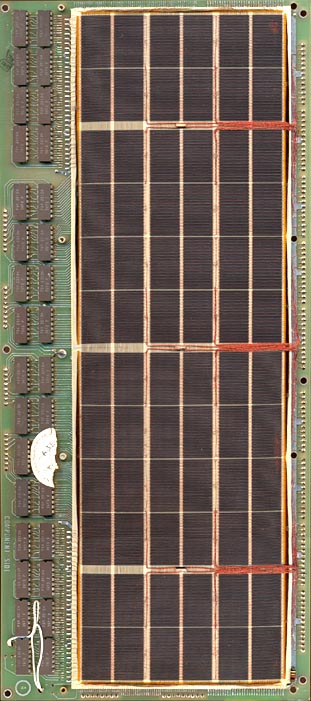
|
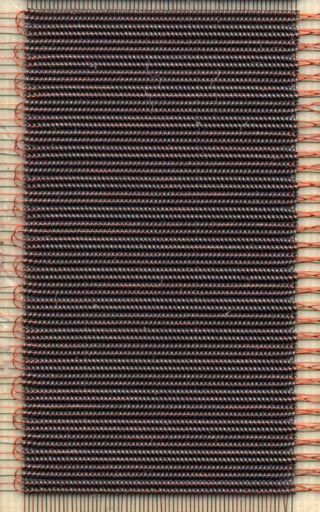
|
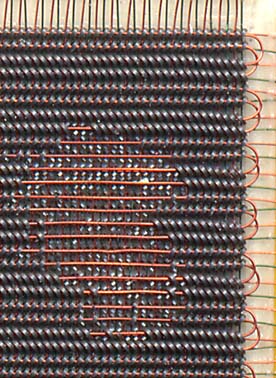
|
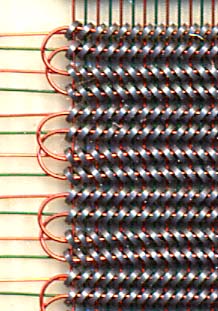
|
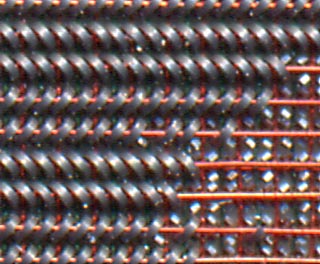
|
| The entire core memory circuit board is 370mm X 165mm (14.5" X 6.5"). It contains 294,912 individual cores, equivalent to about 256K RAM. This board cannot function by itself, the other circuit boards are not shown for simplicity. | Just one of the 72 sections of core memory. It is 27mm X 15mm. It contains 4096 cores - all in 4cm2. | This section has been damaged- these cores will never hold a bit! | The tiny red and green wires are literally the size of a human hair. Each and every core has three wires going through it - one large, two small. |
|